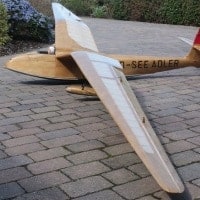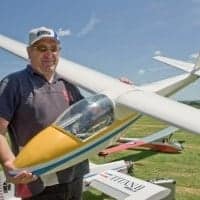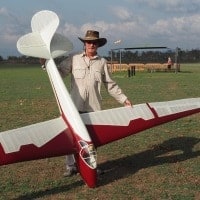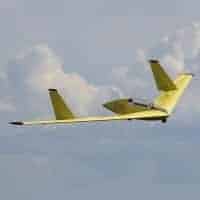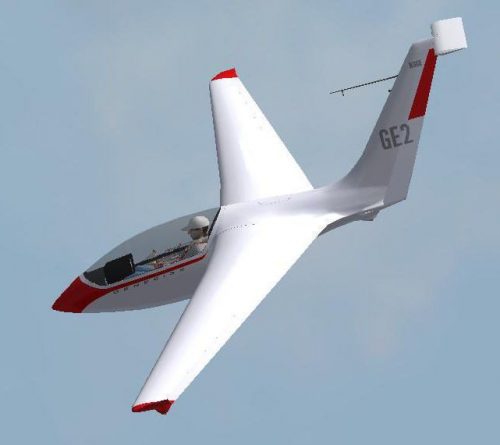Description
The 1935 DFS See Adler
See Adler (Sea Eagle)
The glider was conceived for mixed operations whereby the floats could be easily removed and a skid attached below the fuselage for normal land operations. For flying from a slope, the glider could use the skid for take off, but with floats attached could glide to a lake or river for landing.
The maiden land-based flight took place at Darmstadt in the summer of 1935, piloted throughout by Hanna Reitsch, when it was found that no significant loss of performance was caused by the steep gull angle of the inner wings and overall general performance was quite acceptable.
Later that year in September, water trials were carried out on a busy waterway but was proved unsuitable as, like a runway, there were only two possible landing directions. For this reason the trials moved to the more accommodating Lake Chiem, Bavaria.
A racing speed boat was initially used to launch the glider, but it was only able to reach around 40 km/h., whereas it needed to reach 58 km/h to succeed. One of the problems was the extra weight and drag caused by the long waterlogged tow rope, which sank down deep due to its own weight, causing the “Seeadler” to dive down when launching. Balsa blocks were added as floats to the line and the rope shortened, but still there was insufficient speed. The crew gave up with the tests after only proving the glider was waterproof.
Trials resumed in November 1935 on Lake Constance, but this time using a more powerful Maybach speedboat. Tests were carried out by reducing further the rope length and using a smaller diameter tow-rope. The speedboat finally reached the magical speed of 58 km/h, but was only able to carry out an airborne tow across the lake, restricted by the short length of the rope.
It finally came down to a Dornier Do12 “Libelle” flying boat to finally pull the glider off the water. A bonus was the smooth surface of water in the wake of the flying boat. Testing continued through various weather conditions with satisfactory results, but the “Seeadler” was only ever to be used in the Summer of 1938 by the sand dunes of Rossitten and was aero towed behind a Klemm L26c motor glider.

